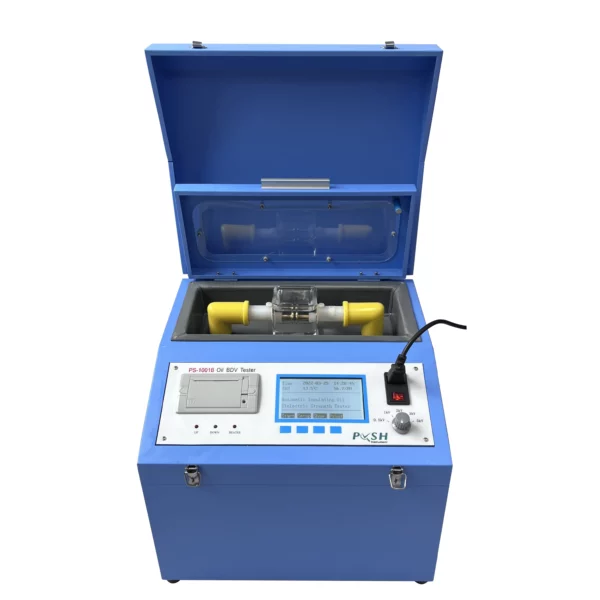A transformer oil tester helps assess the condition of transformer oil by conducting various tests to evaluate its physical, chemical, and electrical properties. Here’s how it works:
- Dielectric Strength Testing: One of the primary tests performed by a transformer oil tester is dielectric strength testing, also known as breakdown voltage testing. This test measures the ability of the oil to withstand electrical stress without breaking down. By applying a high voltage across two electrodes immersed in the oil, the tester determines the voltage at which electrical breakdown occurs. A lower breakdown voltage indicates the presence of contaminants or degradation products in the oil, which can impair its insulating properties.
- Dissolved Gas Analysis (DGA): Transformer oil testers often conduct dissolved gas analysis to monitor the presence and concentration of gases dissolved in the oil. Certain gases, such as hydrogen, methane, ethane, and ethylene, are indicative of abnormal conditions within the transformer, such as overheating, arcing, or partial discharge. By analyzing the composition and concentration of dissolved gases, the tester can detect incipient faults or abnormalities in the transformer insulation or winding.
- Moisture Content Testing: Moisture content testing assesses the amount of water present in the transformer oil. Excessive moisture can degrade the oil’s dielectric properties and accelerate insulation breakdown. transformers oil tester Transformer oil testers use various methods, such as Karl Fischer titration or capacitance-based sensors, to measure the moisture content of the oil accurately.
- Acidity Testing: Acidity testing evaluates the acidity or pH level of the transformer oil. Acidity can increase due to oxidation, aging, or contamination, which can lead to corrosion of transformer components and degradation of the oil’s insulating properties. By measuring the acidity of the oil, the tester can assess its overall condition and detect potential issues early on.
- Insulation Resistance Testing: Insulation resistance testing evaluates the electrical resistance between two conductive surfaces immersed in the oil. A decrease in insulation resistance may indicate the presence of contaminants, moisture, or degradation products in the oil, which can compromise its insulating properties and lead to electrical faults.
- Physical and Chemical Analysis: Transformer oil testers may also conduct physical and chemical analysis of the oil to assess its color, appearance, viscosity, density, and other properties. Changes in these parameters can indicate contamination, degradation, or aging of the oil, allowing for timely maintenance or replacement.
By performing these tests and analyzing the results, a transformer oil tester helps assess the overall condition of the transformer oil, identify potential issues or abnormalities, and facilitate preventive maintenance to ensure the reliable operation and longevity of the transformer.
